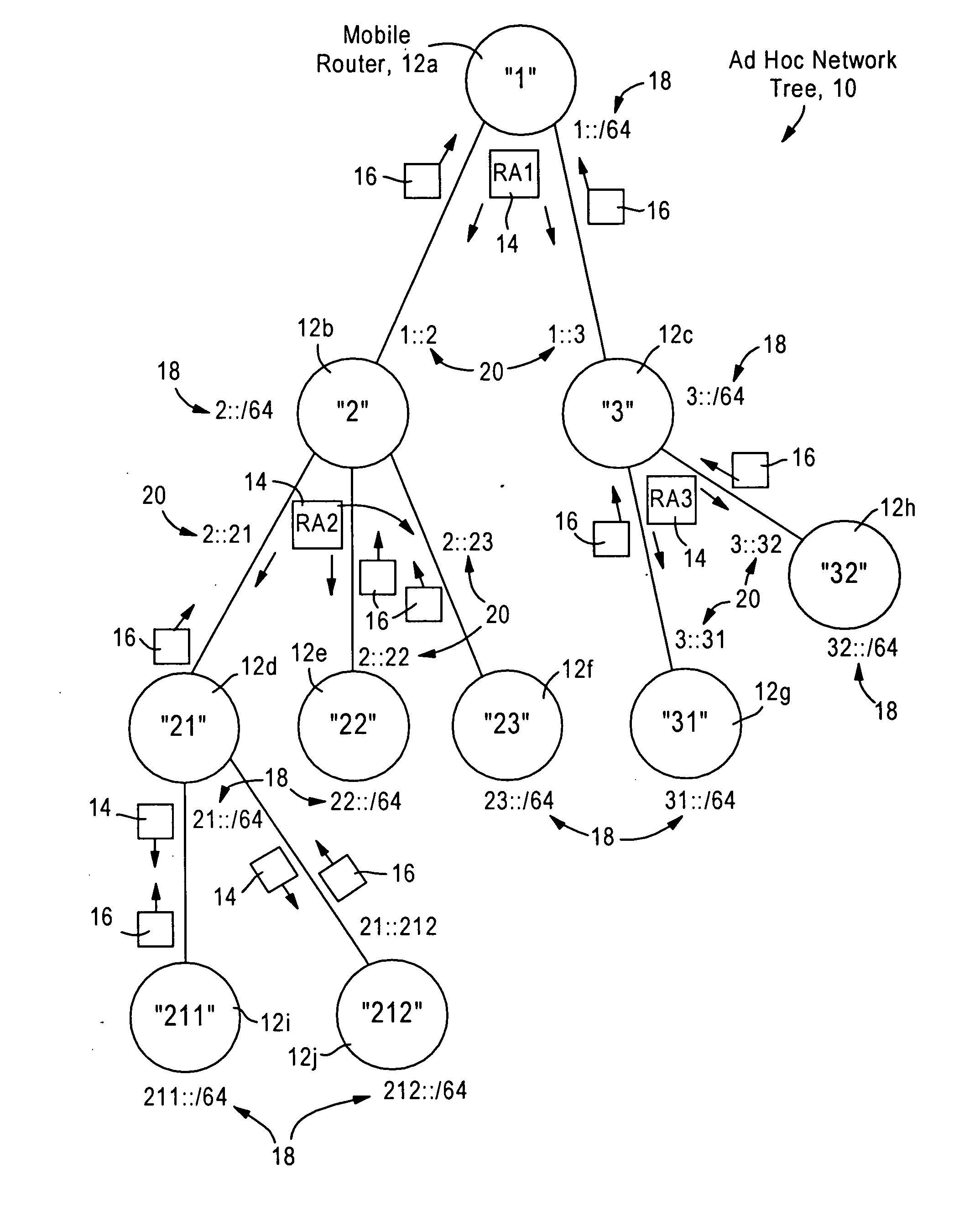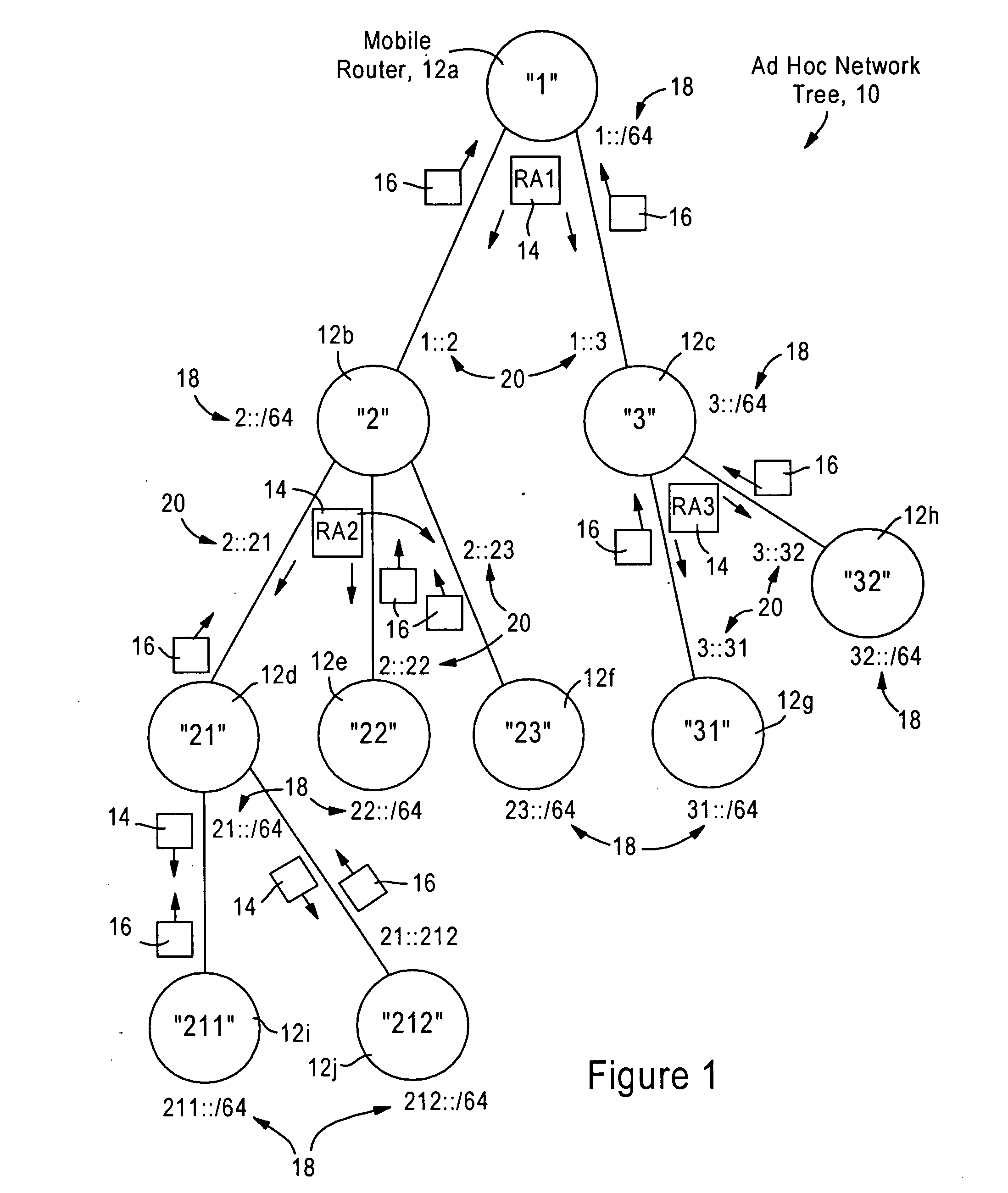Arrangement for providing network prefix information from attached mobile routers to a clusterhead in a tree-based ad hoc mobile network
a mobile router and clusterhead technology, applied in the direction of data switching networks, connection management, digital transmission, etc., can solve the problems of high overhead, network wireless topology may change rapidly and unpredictably, and the wireless propagation characteristics and signal quality between a wireless transmission source and a receiver can be difficult to model and quantify, so as to achieve the effect of rapid convergence and minimal overhead
- Summary
- Abstract
- Description
- Claims
- Application Information
AI Technical Summary
Benefits of technology
Problems solved by technology
Method used
Image
Examples
Embodiment Construction
[0032]FIG. 1 is a diagram illustrating a mobile ad hoc network 10 formed by mobile routers 12 serving as at least one of an attached mobile router and an attachment mobile router. Each attachment router (e.g., a clusterhead 12a) is configured for outputting a router advertisement message 14 that specifies a prescribed address prefix 18 used by the attachment router, and each attached mobile router (e.g., 12b, 12c) is configured for attaching to one of the attachment routers in response to received advertisement messages by selecting a default attachment address 20, and in compliance with a protocol requiring establishment of a tree topology having a single clusterhead. Note that the address prefix (e.g., “1:: / 64”) 18 used by a mobile router (e.g., 12a) refers to the address prefix used by the mobile router 18 in creating and maintaining an addressable subnet for routing of data packets to nodes connected to ingress ports of the mobile router 18; in other words, a mobile router 18 in...
PUM
 Login to View More
Login to View More Abstract
Description
Claims
Application Information
 Login to View More
Login to View More - R&D
- Intellectual Property
- Life Sciences
- Materials
- Tech Scout
- Unparalleled Data Quality
- Higher Quality Content
- 60% Fewer Hallucinations
Browse by: Latest US Patents, China's latest patents, Technical Efficacy Thesaurus, Application Domain, Technology Topic, Popular Technical Reports.
© 2025 PatSnap. All rights reserved.Legal|Privacy policy|Modern Slavery Act Transparency Statement|Sitemap|About US| Contact US: help@patsnap.com



